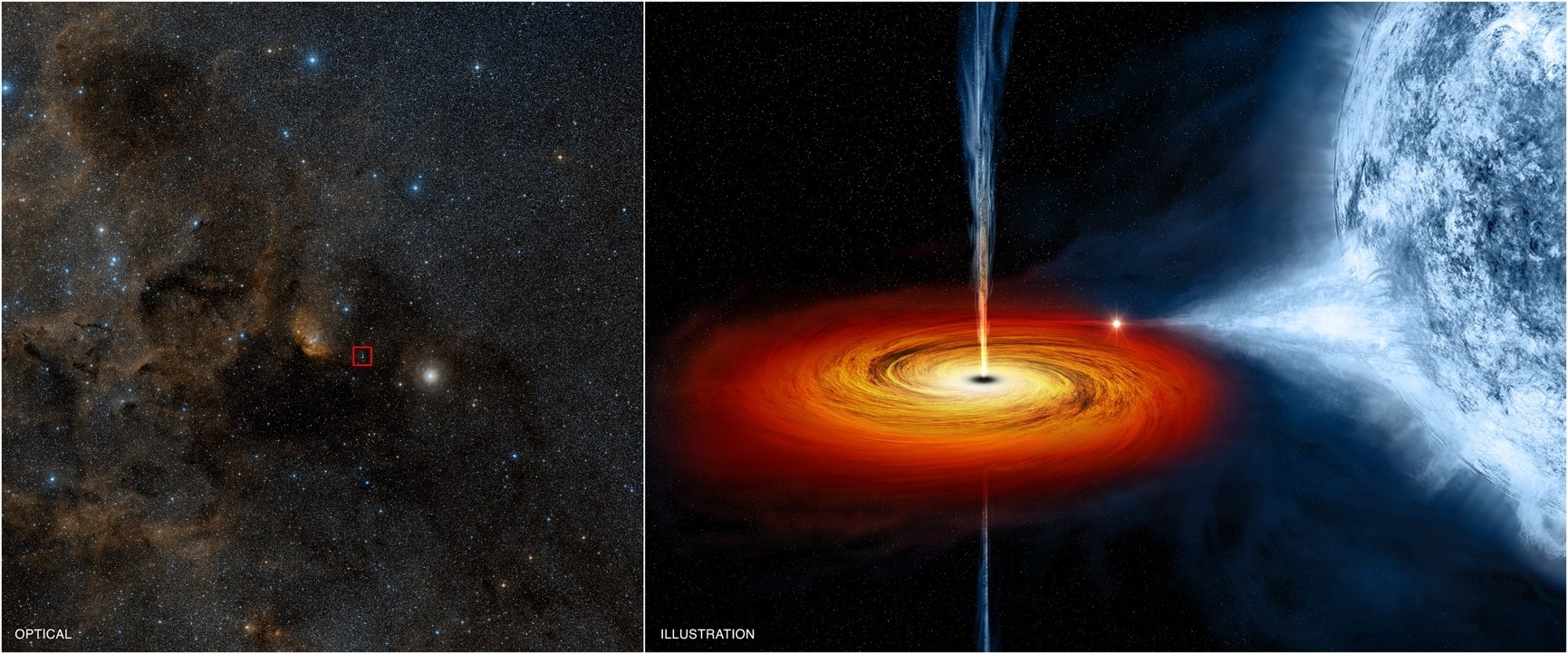CYGNUS X-1

Disclaimer: Copyright infringement not intended.
Context
India’s space telescope AstroSat has measured X-ray polarisation from the Cygnus X-1 black hole, the first time that such a feat has been accomplished, opening new possibilities in the study of the black hole’s environment.
Details
- Cygnus X-1, denoted as Cyg X-1, stands as a celestial marvel in the constellation Cygnus, recognized as the first galactic X-ray source widely acknowledged as a black hole.
- Its discovery in 1971 marked a pivotal moment in astrophysics, and since then, it has continued to captivate researchers worldwide.
- It boasts a remarkable X-ray flux density, reaching 2.3×10⁻²³ W/(m²⋅Hz) or 2.3×10³ jansky.
- The compact component within Cygnus X-1, presumed to be a black hole, weighs approximately 21.2 times the mass of the Sun.
- Located at a distance approximately 400 times greater than Earth-Sun distance.
System Dynamics
- Binary System Configuration:
- Cygnus X-1 forms a high-mass X-ray binary system, situated about 2.22 kiloparsecs away from the Sun.
- It comprises a blue supergiant variable star, HDE 226868, in orbit with the compact object.
- Accretion Disk and X-ray Emission:
- Material from the stellar wind of HDE 226868 contributes to the formation of an accretion disk around Cygnus X-1.
- Intense heating of inner disk matter to millions of degrees generates the observed powerful X-ray emissions.
- Relativistic Jets: The system exhibits relativistic jets perpendicular to the accretion disk, carrying away energy from infalling material into interstellar space.
Origin
- Cygnus X-1 is linked to Cygnus OB3, suggesting an age of about 5 million years.
- It likely originated from a progenitor star with over 40 solar masses, shedding mass through a stellar wind.
- The star's significant mass loss, possibly through a supernova explosion, raises the likelihood that the star directly collapsed into a black hole.
Scientific Wager and Acceptance
- Hawking-Thorne Wager: A scientific bet between Stephen Hawking and Kip Thorne in 1975 revolved around Cygnus X-1. Hawking conceded the bet in 1990 as observational data solidified the black hole hypothesis.
- Empirical Evidence: While lacking direct empirical evidence as of 2004, the black hole classification garnered acceptance based on compelling indirect evidence.
Ongoing Research
- Gravitational Wave Exploration: Cygnus X-1 remains a target for gravitational wave detection, offering potential insights into the dynamics around black holes.
- Continued Observations: Ongoing observations, particularly in X-ray and radio wavelengths, contribute to refining our understanding of Cygnus X-1.
AstroSat's Contribution
- X-ray Polarisation Unveiled:
- AstroSat's Cadmium Zinc Telluride Imager (CZTI), one of its scientific instruments, achieved the groundbreaking feat of measuring X-ray polarisation from Cygnus X-1.
- Unlike normal X-ray measurements focusing on energy or intensity, polarisation characteristics reveal the orientation of the oscillating electric field, offering deeper insights into the black hole's nature.
- Challenging Endeavor:
- Dr Tanmoy Chattopadhyay, the lead author, highlighted the complexity of the task, acknowledging the significant contributions from various Indian institutes.
Significance of Polarisation
- Clues to Black Hole's Properties:
- Polarisation of X-rays provides valuable clues about the geometry and properties of the black hole.
- Understanding the orientation of the oscillating electric field sheds light on the processes occurring in the close vicinity of the black hole.
- Connection to Black Hole Jet:
- This study establishes a connection between hard X-ray radiation and the black hole jet, addressing a longstanding question in astrophysics.
- High-energy X-rays emitted from the black hole jet in Cygnus X-1 were successfully linked to the radiation source.
Conclusion
Cygnus X-1 stands as a celestial laboratory that has significantly expanded our understanding of the life cycles of massive stars and the existence of black holes. Its role in confirming the presence of a black hole and the ongoing research into its properties make Cygnus X-1 a cornerstone in the field of astrophysics, contributing to the broader quest to unravel the mysteries of the cosmos.
MUST READ ARTICLES:
https://www.iasgyan.in/blogs/black-hole
https://www.iasgyan.in/daily-current-affairs/black-holes
|
PRACTICE QUESTION Q. Explain the concept of X-ray polarisation and its significance in the field of astrophysics. Discuss how the recent measurements by AstroSat contribute to advancing our understanding of black holes (250 Words) |





1.png)
